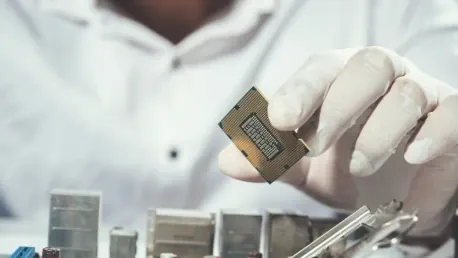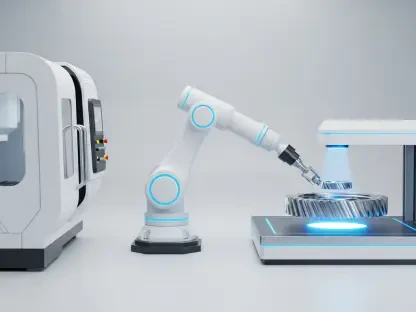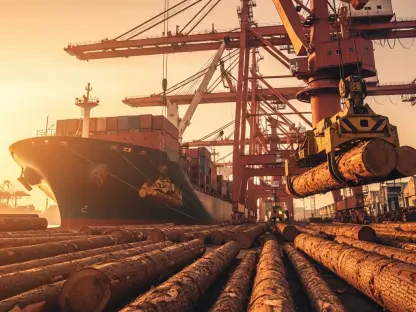The Emirates and many countries in the Middle East are well known for transforming their economies through the discovery of oil. Taiwan has done the same through the manufacturing of semiconductors. These tiny objects are critical for the functioning of cars, TVs, computers, smartphones, ATMs, and more. 90% of the world’s semiconductors come from not one region but one country.
And it’s a growing geopolitical concern.
With pressure to resist occupation from China and mounting claims that the US aims to be a significant competitor, Taiwan needs to remain the world’s go-to semiconductor source.
The Taiwanese Silicon Valley
In East Asia, young STEM (science, technology, engineering, and mathematics) graduates aspire to work at the Hsinchu Science Park, a region similar in purpose and function to Silicon Valley.
Hidden beneath the glamor of Hscinchu’s well-manicured lawns and modern buildings lie some of the world’s most important factories. These are the backbone of the semiconductor industry, with a direct pipeline that starts at school and ends with a career (usually a lucrative one) all in one geographic area.
TSMC Supremacy
Morris Chang is the man at the center of the semiconductor industry. The now 93-year-old founder of Taiwan Semiconductor Manufacturing (TSMC) has built an enduring business that not only transformed the Taiwanese economy but also inadvertently secured geopolitical protection.
The semiconductor industry accounts for approximately 15% of Taiwan’s economy, and TSMC produces the lion’s share. The billion-dollar company also represents 30% of Taiwan’s stock exchange. The importance of Chang’s empire cannot be overstated.
Enjoying the government’s admiration and holding its people’s aspirations, TSMC seems to operate on a particular policy stipulating that “what TSMC wants, TSMC gets.” The company is relied upon by industry giants like Apple, Nvidia, Qualcomm, and Broadcom, and so its continued success is in the best interest of all parties concerned.
Looking ahead, the company has to mitigate several risks to ensure output matches global demand. The company is a significant energy consumer, with TSMC requiring almost half of Hsinchu Park’s energy supply and large amounts of water. With climate change, Taiwan lacks abundant supply, and TSMC is already discussing desalination. They are also reportedly lobbying the government to prioritize renewable energy.
The US Government’s Involvement in Taiwan’s Semiconductor Industry
The semiconductor industry’s global significance means that the world’s major economies have a vested interest in what goes on in this region. The duality of their dominance is both the country’s biggest blessing and a curse.
Incoming President Donald Trump raised concerns about Taiwan’s supremacy and the fact that the US needs to manufacture and produce more of its own semiconductors. “You know, Taiwan, they stole our chip business … and they want protection,” Trump said during his appearance on the Joe Rogan podcast. He also called into question their support and defense of Taiwan—something that will be covered a little later.
Some experts disagree and attribute Taiwan’s reign to healthy competition. According to Dr Raymond Kuo, a political scientist at the Rand Corporation, it’s less that they’ve taken business away and more so that they “simply outcompeted other countries.”
Research and development at foundry factories like TSMC have been intensive, giving them a significant competitive advantage. Their sole focus has been to consistently enhance efficiency by making chips smaller while increasing the number of transistors. With focused areas like the Hschincu precinct, a pipeline of highly skilled workers is consistently fed into the ecosystem.
Several other factors have allowed Taiwan to reign supreme. Their lax labor laws make it difficult for other countries to replicate the production volume and the industry’s prestige level among citizens; this means that many people aspire to work at companies like TSMC and consistently attract top talent.
Kuo explains further that “[Companies] can have three shifts of masters or PhDs running fabs [fabrication plants] each day. […] There’s also the ecosystem of secondary industries built to support chip manufacturers.”
It is more of an ecosystem than an industry, with the entire manufacturing process built in and hyper-specialized in semiconductor technology. Training can start from as early as secondary school, and with close to 40 years of investment in this sector, their Vice Minister of Science and Technology feels it would be “impossible just to replace, and hard to copy.”
The fact that Taiwan is the number one producer of semiconductors opens the door for other countries to compete, particularly because it leaves the world vulnerable if they cannot fulfill orders. COVID-19 provided a glimpse into this reality when the global shortage of chips severely impacted international trade.
Companies are looking to diversify their supply chain to mitigate the crisis but will still heavily rely on Taiwanese knowledge and expertise. Rather than building new semiconductor factories from the ground up, governments and private businesses want to set up new plants overseas through companies like TSMC.
The Geopolitical Tension
As mentioned earlier, Taiwan has much to contend with, and it’s more than just the climate change-renewable energy factor. Geopolitically, Taiwan’s semiconductor industry has attracted the attention of China, and it relies on the US to avoid occupation by Beijing.
Often referred to as the “Silicon Shield,” Taiwan is painfully aware that its status as the world’s semiconductor factory is a double-edged sword. The US provides defense protection, which acts as a deterrent to China, and TSMC sits at the center of this storm.
Warren Buffet weighed in on this complex situation, stating, “Taiwan Semiconductor is one of the best-managed companies and important companies in the world.” Still, this wasn’t enough to dissuade the investing tycoon from disposing of his $4 billion stake due to the geopolitical tension at play.
The prevailing belief among many in the West is that TSMC is attractive enough to goad China into a takeover, providing ample political leverage. “I could imagine Beijing using its control of these production facilities to coerce other countries into accepting its conquest,” says Kuo. “Semiconductors would become another point of leverage that Beijing could use in economic or political coercion of other countries.”
However, others feel that TSMC and Taiwan’s situation is less precarious than it seems. This is largely due to the fact that if China were to forcefully gain access to the Hsinchu region infrastructure, the chips would be intentionally created to work overseas and rely on international networks to enable production. Thus, China, with only half the means of production and none of the cooperation, would find itself in a predicament.
The Taiwan Effect
Another element that just works in the context of Taiwan is the fact that the people who work there are incredibly dedicated. These sleepless fabs, or factories, operate 24 hours a day, 365 days a year. With no room for labor disputes or machine errors, TSMC and the like are a masterclass in efficiency and excellence.
Not simply satisfied with being number one, TSMC continues to push the boundaries of the industry and lengthen its lead. They’re now developing chips that measure around 1.4 nanometers, an unbelievable feat when you consider that a human red blood cell measures approximately 7,000 nanometers.
Moving Semiconductor Production to the US
One of the solutions to this geopolitical issue is to start initiating semiconductor production in the US. However, according to TSMC’s founder, Morris Chang, expanding operations into the US would be a costly and futile exercise. And, of course, there is the added benefit of national security.
In the wake of Trump’s comments, which hint at a colder relationship between the two nations, Taiwanese officials are keen to remind the new administration of the great friendship between the US and Taiwan. That being said, they’re firm in the decision to keep research and development at home.
Kuo succinctly stated, “Diversification would mean countries have less reason to defend Taiwan. Why defend when you can easily switch to a different supplier?”
With mounting pressures and geopolitical tension, the Silicon Shield is likely to prevail, and Taiwanese supremacy will remain a reality for the long term.
Concluding Thoughts
Climate change, energy and water consumption, and geopolitical tension. The Taiwanese story of the semiconductor industry is a fascinating case of how manufacturing can elevate a country’s national security and economy.
With the development of Hsinchu Science Park, Taiwan has a steady pipeline of dedicated scientists pouring into the semiconductor industry, some starting as early as secondary school. The amount of research and development being conducted in Taiwan provides a competitive edge.
Taiwan Semiconductor Manufacturing (TSMC), the country’s largest manufacturer, is also central to the conversation. A number of interested parties, including China and the US, are eagerly eyeing TSMC’s growth and development. With some of the largest multinational corporations in their customer database, TSMC’s ongoing development is of global concern.
Looking ahead, the US-Taiwan relationship might take some strain, as Taiwanese officials maintain that their IP will remain on their soil while the US pushes to have a TSMC factory set up on their shores. This, however, could prove futile and costly, particularly when you consider that part of what makes Taiwan work is the labor laws and cultural significance of the industry.
All in all, the gap between Taiwan and the rest of the world in terms of manufacturing semiconductors continues to widen, and there are no signs that it’s slowing down.









